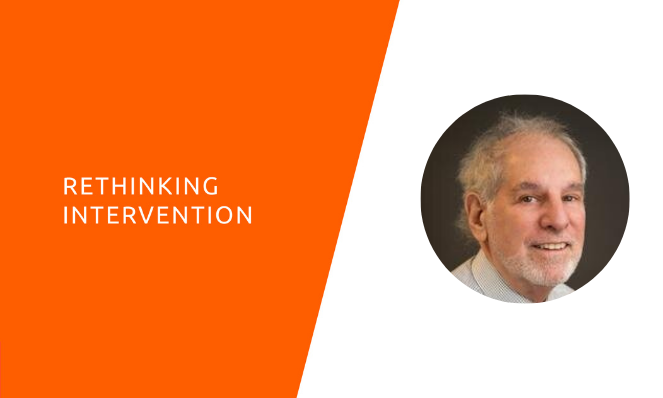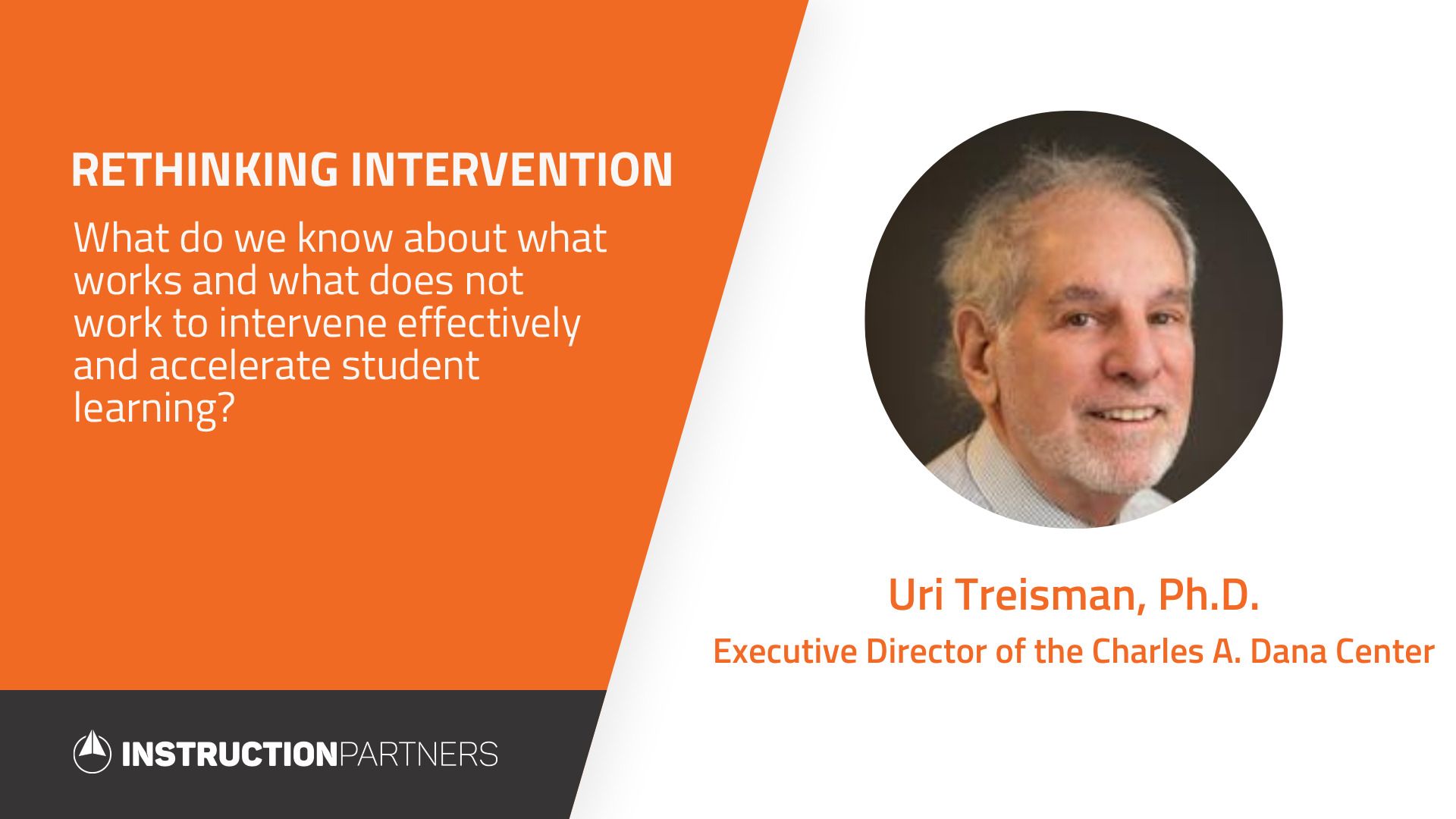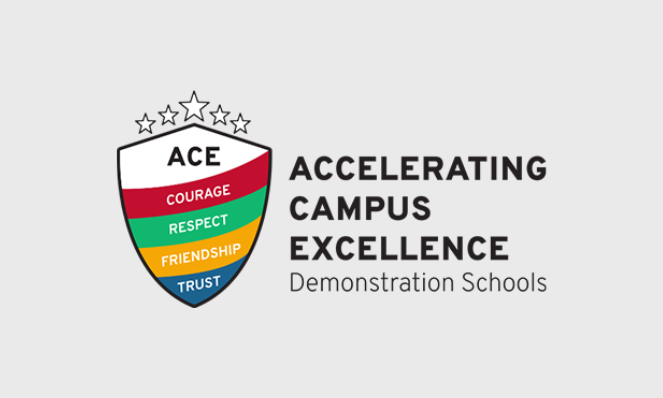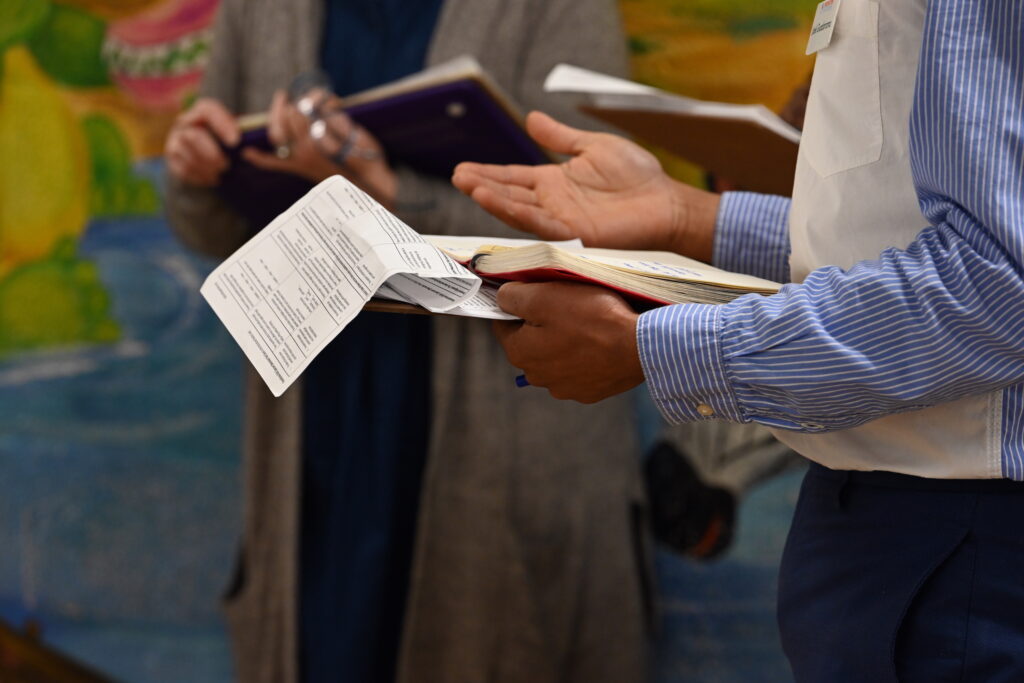
Uri Treisman, UT Dana Center
Uri Treisman is a University Distinguished Teaching Professor, professor of mathematics, and professor of public affairs at The University of Texas at Austin. He is the founder and executive director of the University’s Charles A. Dana Center.

EF: Let’s start in a personal place. Tell us about your own journey as a learner and what that has taught you about learning.
UT: I’ve never had my own biological children. But thirty-five years ago, working with the courts on homelessness in foster care, I met two exquisite fourteen-year-olds, an African American young man and a dark-skinned Latina and I became legally responsible for them, I became a parent. They came to Berkeley and they had not really been in school for a while, but the idea was that we’re going to be surrounded by Berkeley African American and Latino Rhodes Scholars and engineers, a perfect environment. So as a new parent, I have to sign their schedule, and it says “career math.” And I say “Algebra.” So the school says, “career math.” I say “I’m a new parent, I apologize. Can you please tell me which careers you’re preparing for?” And the note comes back saying they’re not going into algebra, that they’re not ready. They failed the placement test. So I walk in with my arms around them. The counselor sees me and says, “Oh, sir, I’m so sorry. I’ll put them right into algebra.” Without me saying anything. I had this rage, completely disoriented. What it took me to get those kids what was needed in a school system that was about equity, was so much more than I could have ever imagined. Especially given to the people I knew in that system cared as deeply as I did about children and their goals. And it taught me, which is not easy for me, a certain kind of humility. The complexity of these systems needs to be honored. And the people in them know a lot more than we do about the everyday practices. Someone once said, they know more than they can articulate, and often we can articulate more than we know. So that was a lesson for me. It forced me to recognize that even the best intentions, my ability to call the mayor when I was unhappy, or the school superintendent, to pick their teachers. It took enormous amounts of energy to compensate for four years of non-involvement.
EF: And you had so much privilege that you were able to bring to that.
UT: I had already 15 P.h.D. students who studied learning. And yet doing it in the context of the real world was so much harder than I thought it would be.
EF: Can I ask how these esteemed students are doing today?
UT: Yes. So one graduated from UC Santa Cruz and when she graduated I told her if she graduated, I would give her any gift that she wanted that I could possibly imagine. And she said to me, “I want to be in a place where people do not think they know who I am when they look at me.” She picked Norway. Why? I don’t know. She’s a health practitioner in rural Norway. And Sean is an insurance salesman, and he graduated from college. And this would not have been possible without the fact that I had exquisite friends, privilege, and the help of people who really knew how to parent. And an extremely good therapist—both for me and them.
EF: I take away from that story just how much you personally learned about how much is baked into the system that we don’t account for in some of the theory and how practical understanding of that and recognition of that needs to go into how we think about change. Is that the right takeaway?
UT: In that stage in my career, I mostly thought of intervention as filling in holes, building a stronger infrastructure. Some students can be brought up to or ahead of grade level with minimal responsible professional advising interventions. But it’s fewer students than I would have imagined. When I work in middle schools, in eighth-grade algebra, it’s very typical that a quarter or a third of the students are four years behind using standards instruments. So the idea that helping them catch up, which we are morally obligated to do, and must do, is easy or can be done with a simple theory. This doesn’t comport with my experience.
And the first thing, if I were to frame the lesson, is that I’ve now had 108 doctoral students, I know a lot about the intricacies of mastering content, and consolidating knowledge. But if the students aren’t there and don’t have the wherewithal to learn, my sophisticated knowledge is not as helpful as I would like it to be.
That’s especially true today. Two things are going on today that we in the world need to look at, we who are privileged to support schools and support teachers and families. The first is that more kids are going to have difficulty being in school because of the devastating wipeout of for the last 10 years of gains to the poorest part of the population. 40% of families making under $40,000 experienced job loss. This is not the time to say there are no excuses. This is the time to figure out what kids need and make sure our theories don’t come before grounded experience and reality.
The second thing, and this is much more subtle, that the strategies we use for equity 10 years ago or 20 years ago were strategies that focused on hope in the future. They worked when there was upward mobility. In my work with master teachers in 10 districts, seven of the groups noticed that the strategies weren’t working when kids were downwardly mobile and said “look, my dad went to community college as an employee.” We in intervention need to have our pulse on the lives of the families we want to support. If they’re downwardly mobile, we need to tweak and use different strategies of making sure that they’re there. If we don’t recognize students’ reality, they will not trust us. And without that trust, we can’t teach.
EF: it requires us to both look at the assumptions underneath our strategies and take action to ensure that we understand our students.
Let’s zoom out to understand what we know to be true. I think this is a very confusing time and it’s an important time to then anchor back to what we do know.
UT: Well, one of the things that should have been obvious, but it took a lot of harder experience to learn, is that you can’t help kids catch up by slowing them down. It doesn’t mean that you don’t go backward on a particular day. The fact is, is you have to go back selectively but in the context of keeping kids moving forward and getting them to grade level.
EF: That has been a theme across all of our conversations, particularly in mathematics, that you can go back and you have to go back, but you should do it in the context of getting them to grade level.
UT: But there’s something more subtle, which you don’t see in most of the curriculum out there. And that is looking forward. When you work with students who’ve been denied opportunity, they really don’t know even the names of the courses that come next. So you don’t want students to be led like sheep on a death march to the quadratic formula. Like in our approach, in every topic, kids see what it’s going to look like in two years, in three years, when they’re in the work-force. We have to not be so wedded to absolutes, that we don’t think about the development of children, their understanding of why, not only what they’re doing, how to do it, but why they’re doing it. And this connects with their belief that effort into improvement will matter. And that they are building a life that they know something about. If that’s separate from the math, neither will work.
Early on, we focused a lot on individual teachers. There was a period where we focused on the teacher and the principal as an instructional lead. We told principals to spend lots of time in classrooms, and that’s been a big mistake. Research has largely shown it’s their job to coordinate and manage instruction, not necessarily to be the coach in every class. And we didn’t understand how difficult it was for young teachers to teach. Because we never solve the problem of which kids get which teacher. So the importance of coherent school norms, the kind of common practices that make it possible for less experienced teachers, who are the teachers for the poorest children, get to learn and be effective. Some teachers are so good they can make bad ideas work. Only a handful. Most regular, talented mortals need to be in an environment that reinforces the messages they give to kids. Kids who are struggling cannot thrive when every classroom they’re in has a different set of principles, norms, and values.
EF: Take us into what we know does not work. What are things that maybe you thought would work and your research over time has found does not?
UT: Let’s sort of a meta-level, meta-level is always easier. In the rare semester, I’m not teaching education reform seems a lot easier. What doesn’t work? Well, as I said, slowing students down, remediation. I started as a groundsman on the community college campus, grounds, and maintenance. The first lesson was, you don’t build structures on weak foundations.
Remedial programs cannot work in environments that are focused on excellence and moving forward. That’s not to say you don’t have to attend to students’ learning needs. When you look at the programs in remediation, it seems like the rhetoric is all focused around some deficiencies. The whole language of remediation on the thin surface looks positive, but it’s all focused on students’ weaknesses. Unless you can practically figure out strengths, you’re not going to succeed with a student. And that takes experience. It’s not something that first-year teachers can do. And there are of course exceptions. But the typical first-year teacher can’t even listen to students in the classroom without the class falling apart.
Understanding what the strengths of students are and practical strategies for constructing environments in which those kids can thrive. Before you can get to an on-track, on-time model, you have to be able to ensure that people see the strengths of students, have a theory of their development that works. I think we’ve learned that you need to have relational trust in schools. Even the best ideas don’t work in an environment where people don’t respect each other or their principal. That’s what research shows. We in the world of technical support and advice, we have to recognize that theory of learning or cognitive science and neuroscience psychology. The second thing is while there is deep research, about motivation, for example, it really is only a small piece of learning. Let’s say Carol Dweck’s exquisitely beautiful work. It became popular.
It’s a beautiful work. But it’s not a replacement for high-quality content. This is a deep institutional theory. Reform organizations need to be trending. They need to be aware and to be doing one of everything, exactly what they counsel principals not to do. So we have to be cautious about new theories because it’s not embedded in the fiber of everyday life. Not to use that stuff is also crazy. For example, the Stanford folks went out and gave assemblies on capability mindsets. We did walkthroughs three weeks later. And you have all these kids said, “You know, I tried really hard. I must be really dumb because it didn’t matter.” We had teachers saying, “That kid has the wrong mindset, there’s nothing I can do.” Now Carol was horrified and she immediately wrote beautiful clarifying editorials. But the pressure to do the trending, to reduce complex things, we have to resist that.
EF: That is so relevant, especially in a crisis. The urge for the “three-point plan” right now is very intense. What I’m hearing from you is don’t oversimplify and don’t over implement something new. Think about it carefully in the context of what you know, and what is already a part of your fabric.
UT: Most of my Superintendent colleagues are now trying to create stability and predictability. They’re focused on truancy. They’re not focused on the idiosyncrasies and fine points of constructivist or direct instruction, but more, Where are the kids? How do we relate to the community? How do we find and relate to the community partners, when that used to be nice, but is now necessary? That’s what they’re working on really hard and we need to be able to help them support that. We’re also trying to figure out this, you know,
.At a moment like this, you have to actually know what you can pull off. And when you’re a principal in a district, you need to figure out where does your power come from? What can you actually pull off in ways that create calm that create a buffer that allows people to do teaching and learning? That’s what we’re trying to help people do.
EF: I’ve also been just so struck across these conversations by the reminder of why we all got into this profession in the first place, and how relevant those original motives are to this moment. And I think we all got into this work for various reasons, but it had to do with the complexity of human interaction around teaching and learning, not the simplification of it. So, any final thoughts for us?
UT: I’m gonna respond to your last comment, that’s something I deeply care about. I’ve had 108 graduate students, more than half of them came from TFA. TFA produced a flotilla of wonderful people committed to a better world for children. What I’m seeing now is that many of those individuals no longer believe in the dream that animated them. They’re asking hard questions about, were the theories they went into schools with adequate to the task? We must reengage that community. If those individuals lose faith, it will be devastating for education reform. And that is more important than the idiosyncrasies of particulars of instructional theory.
EF: The thing that’s more important is the commitment to the possibility.
UT: Yes, be committed to capture and to use what we have learned and not to let our disappointments and our previous failures pull us away from a dream that was right.
EF: Oh, that’s very interesting to think about. I am a Teach for America alum myself. I actually found, particularly in our work in Tennessee, I became more of an optimist about the dream and more of a believer that it is possible, and more humble about what it takes.
I do think this is just such a moment to come back to the fundamentals and come back to the dream. It is a reinvention of our country in so many ways right now. And therefore, we need to be very clear on what the dream is that we are pursuing.
UT: We’re in a period of enormous polarization. We’re in a period where people systematically seek out narrow areas of disagreement and broaden them into tribal conflict. Our job in civic work is to find narrow areas of agreement and build them into platforms for a world that is worthy of our children and ourselves.


